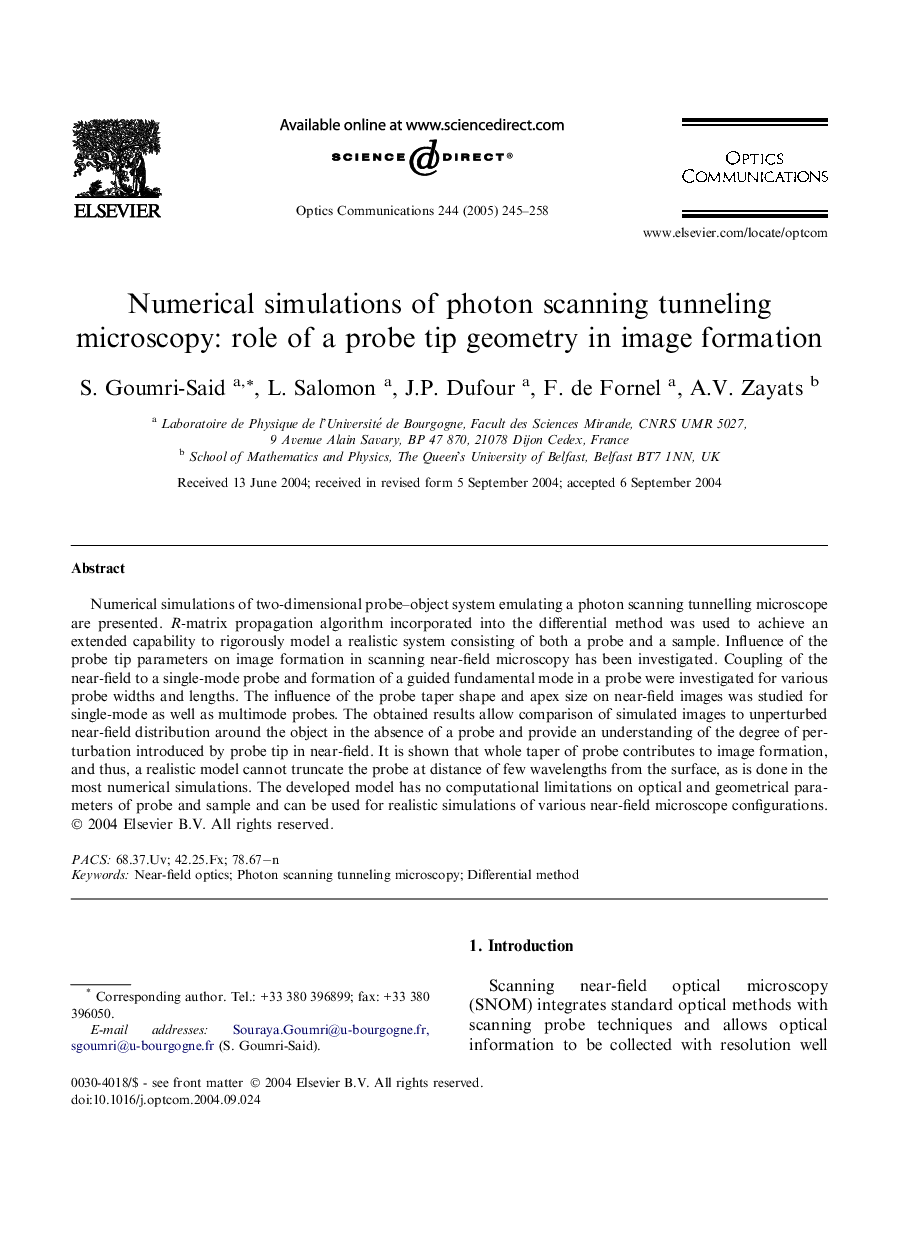| Article ID | Journal | Published Year | Pages | File Type |
|---|---|---|---|---|
| 9786224 | Optics Communications | 2005 | 14 Pages |
Abstract
Numerical simulations of two-dimensional probe-object system emulating a photon scanning tunnelling microscope are presented. R-matrix propagation algorithm incorporated into the differential method was used to achieve an extended capability to rigorously model a realistic system consisting of both a probe and a sample. Influence of the probe tip parameters on image formation in scanning near-field microscopy has been investigated. Coupling of the near-field to a single-mode probe and formation of a guided fundamental mode in a probe were investigated for various probe widths and lengths. The influence of the probe taper shape and apex size on near-field images was studied for single-mode as well as multimode probes. The obtained results allow comparison of simulated images to unperturbed near-field distribution around the object in the absence of a probe and provide an understanding of the degree of perturbation introduced by probe tip in near-field. It is shown that whole taper of probe contributes to image formation, and thus, a realistic model cannot truncate the probe at distance of few wavelengths from the surface, as is done in the most numerical simulations. The developed model has no computational limitations on optical and geometrical parameters of probe and sample and can be used for realistic simulations of various near-field microscope configurations.
Related Topics
Physical Sciences and Engineering
Materials Science
Electronic, Optical and Magnetic Materials
Authors
S. Goumri-Said, L. Salomon, J.P. Dufour, F. de Fornel, A.V. Zayats,
